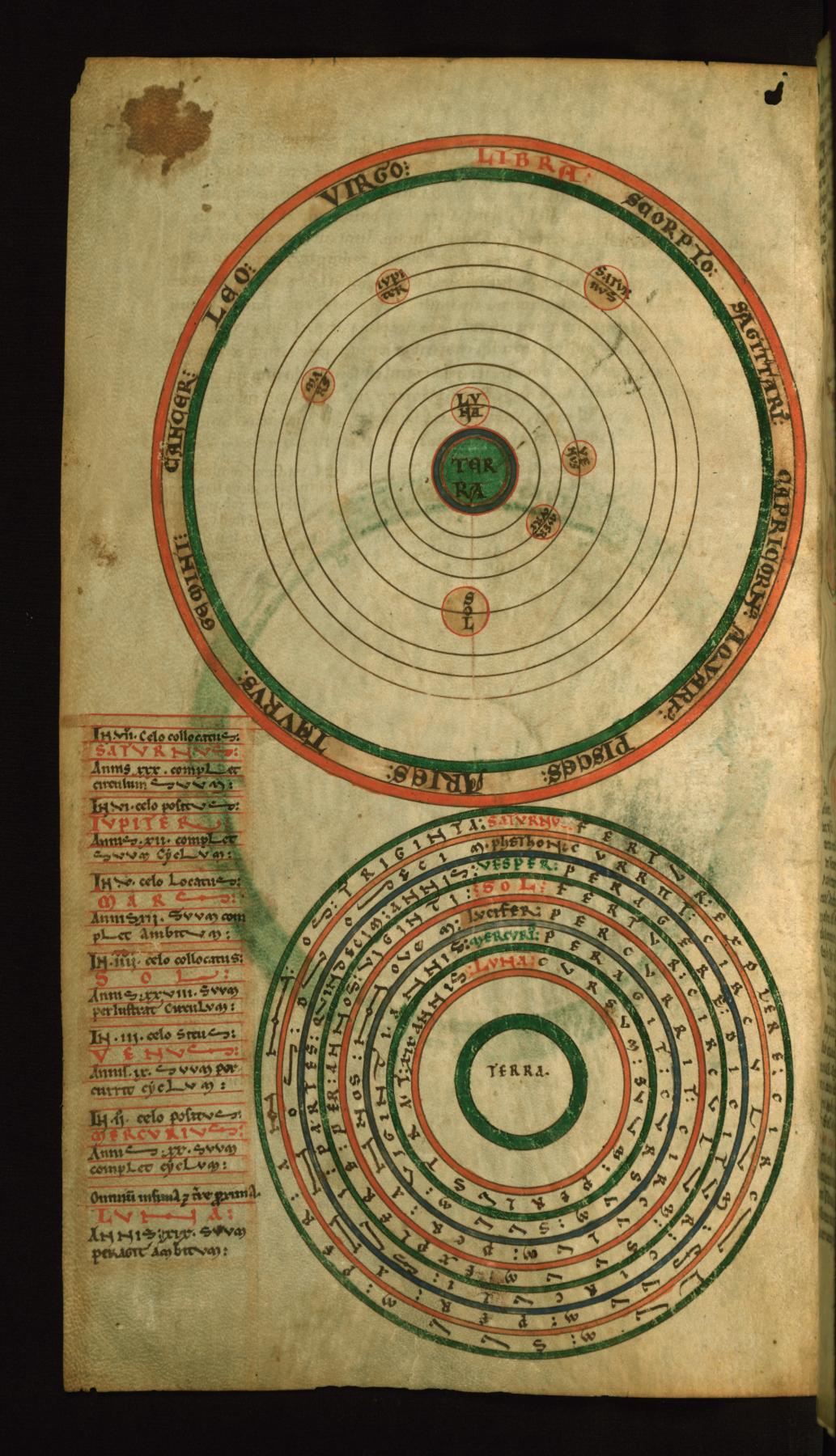Diagram of the Planetary Orbits and Zodiac and Diagram of the Planet Cycles
(Manuscripts and Rare Books)
The wheel diagram at the top of the page shows the Earth at center, with the seven heavenly bodies--the Moon, Mercury, Venus, the Sun, Mars, Jupiter, and Saturn--orbiting in concentric rings. The zodiacal names are given in the diagram's frame. As had the ancients, medieval authorities believed that the Earth lay at the center of the universe, and that the Sun, Moon, and planets circled it. Also following ancient writers, medieval authors called the planets "wandering stars" because of their eccentric orbits: the word "planet" derives from the Greek "planetoi," for "wanderers." Their orbits were calculated according to the length of time it took them to complete one circuit of the zodiac. In the wheel diagram in the bottom half of the page, the Earth at center is surrounded by concentric bands containing the names of the heavenly bodies and the intervals of their orbits.
Provenance
Provenance (from the French provenir, 'to come from/forth') is the chronology of the ownership, custody, or location of a historical object. Learn more about provenance at the Walters.
Gruel and Englemann Collection, Paris [1]; acquired by Henry Walters, Baltimore, 1903; by bequest to Walters Art Museum, 1931.
[1] no. 131, bookplate on inside upper board
Exhibitions
| 2013 | Living by the Book: Monks, Nuns, and Their Manuscripts. The Walters Art Museum, Baltimore. |
| 2001-2002 | Expanding World Views: A Millennium of Maps. The Walters Art Museum, Baltimore. |
| 1988 | Heavenly Bodies. The Walters Art Gallery, Baltimore. |
Geographies
United Kingdom, England (Place of Origin)
Measurements
H: 10 1/2 × W: 6 1/8 in. (26.7 × 15.5 cm)
Credit Line
Acquired by Henry Walters, 1903
Location in Museum
Not on view
Accession Number
In libraries, galleries, museums, and archives, an accession number is a unique identifier assigned to each object in the collection.
In libraries, galleries, museums, and archives, an accession number is a unique identifier assigned to each object in the collection.
W.73.2V



